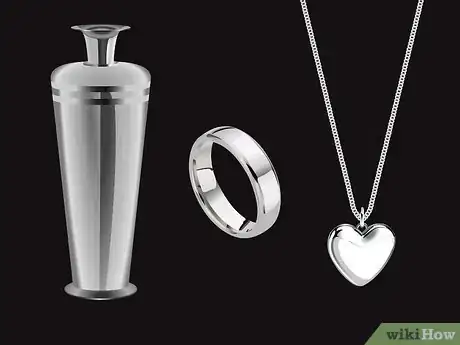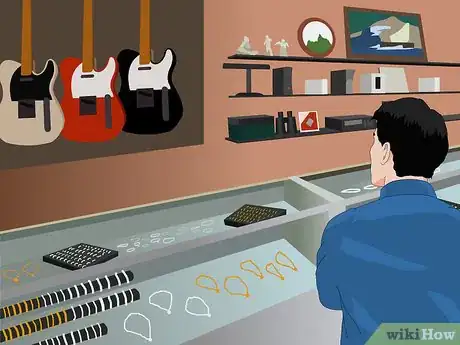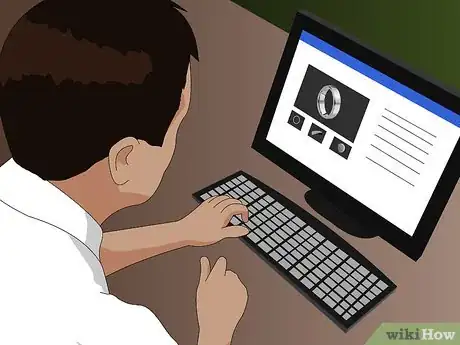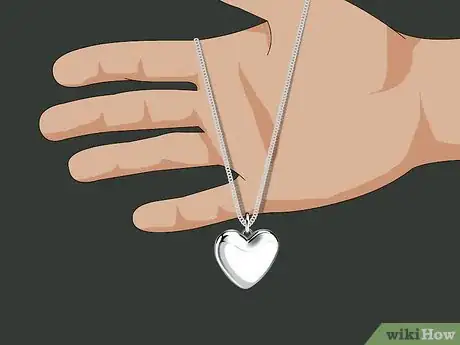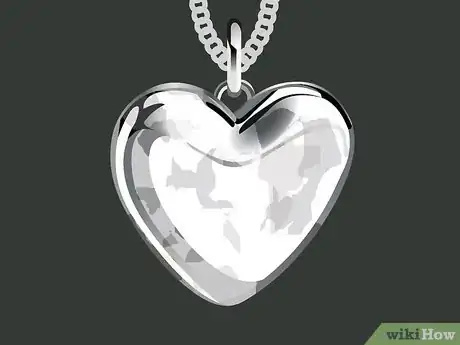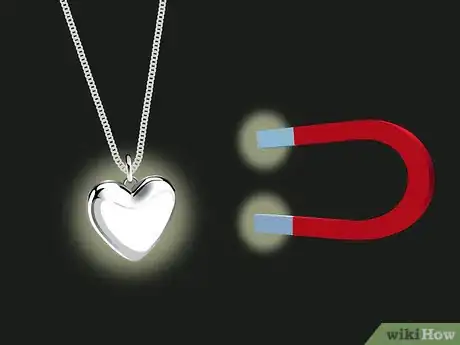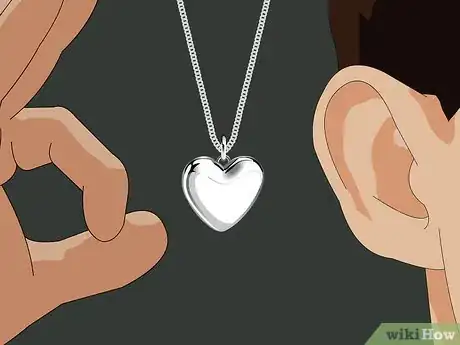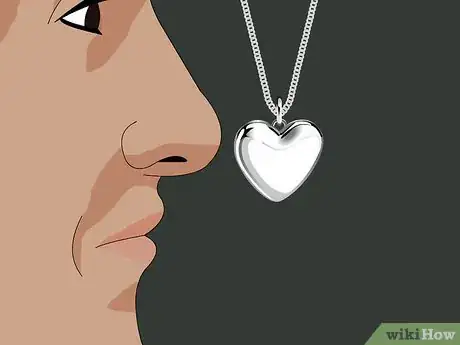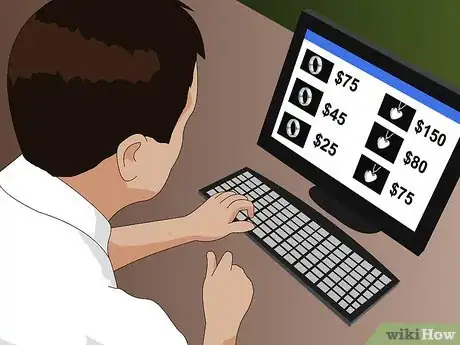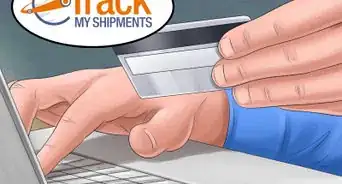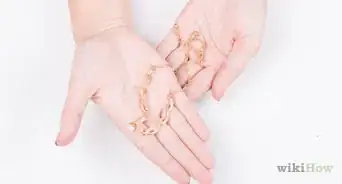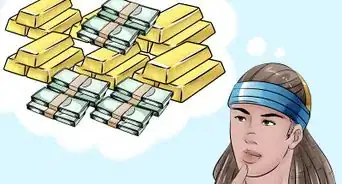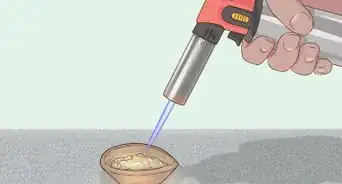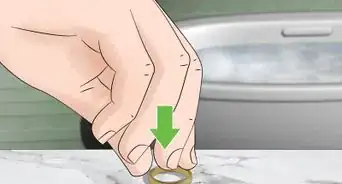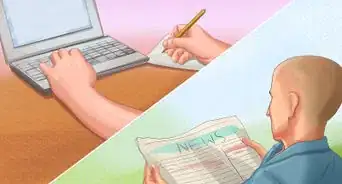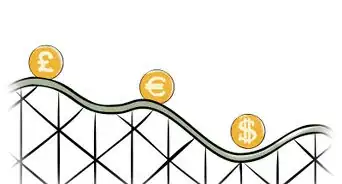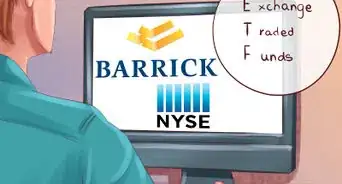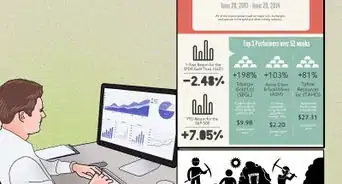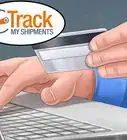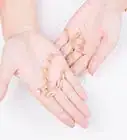This article was co-authored by wikiHow Staff. Our trained team of editors and researchers validate articles for accuracy and comprehensiveness. wikiHow's Content Management Team carefully monitors the work from our editorial staff to ensure that each article is backed by trusted research and meets our high quality standards.
wikiHow marks an article as reader-approved once it receives enough positive feedback. In this case, 93% of readers who voted found the article helpful, earning it our reader-approved status.
This article has been viewed 73,238 times.
Learn more...
While many people are familiar with purchasing and selling off scrap gold, not as many people are aware that scrap silver is another lucrative and less tapped market. Depending on your interest level, it's possible to make some spending money selling off your spare silver or start a full-time scrap silver business with scrap you purchase.
Steps
Finding Silver Scrap
-
1Educate yourself about silver in all its various forms. Diversify your sources of information. Read books about gold and silver scrap dealing, as well as the blogs of dealers. Many dealers post scrap buying and selling tips online. Learning about silver buying means learning about the scrap dealing market and about silver itself.
- Common sources of silver include jewelry, watches, flatware, medals, awards, plaques, and older currency.
- Coins minted up to and including 1964 in the US or 1968 in Canada often contain silver.
-
2Visit garage sales, estate sales, and flea markets. Look through mismatched spoon and fork bins in thrift stores. Jewelry from thrift stores may have been combed through thoroughly already, but check out the watches and jewelry at obscure stores in small towns, antique shops, and estate sales.Advertisement
-
3Visit vintage stores, thrift stores, antique stores, and pawn shops. Look for decorative items, jewelry, vases, tea sets, and silverware. You may be able to buy bulk amounts of certain items in these stores.
-
4Check online auctions. Search for silver, and read the description. Some sellers will use a stock photo of coins or other silver, but will write a more revealing description. Make sure the seller is clear about having authenticated the metal. Only buy scraps from sellers who have a return policy in case you're displeased with the condition or nature of the item.
Identifying Real Silver
-
1Check for silver hallmarks. None of the metals you find will be 100% silver. Sterling silver is considered "true" silver because it is .925 or more silver mixed with a base metal.[1] Check the jewelry, flatware, and other silver items you are considering buying for stamps that indicate their silver content. Most sterling items are marked with a stamp that says ".925" or "sterling."
- Other stamps that indicate sterling are "925," "950," "Ster," and "S.t.g."
-
2Check for wear. Examine any pieces you are considering buying with a magnifying glass. Determine whether something is silver or merely silver plated. If you are examining jewelry, you can look for the places the jewelry was most handled, such as the clasp or any linking pieces. If those areas are a different color, the jewelry may indeed be mostly brass or copper.[2]
-
3Check for magnetism. Silver is not attracted by magnets. Bring a magnet when you are going to check a bit of silver you are considering purchasing. If the item is attracted to the magnet, it is likely made of other metals. However, there are metals other than silver that do not respond to magnets, so do not rely exclusively on this method.[3]
-
4Buy a silver testing kit. Your kit will contain bottles of acid and a black basalt touchstone. Use the touchstone to scratch the silver. Test the silver that sticks to the touchstone with the acid. Do not test the piece directly, as it may be damaged by the acid. If your test line turns red, you have silver.[4]
- The acid test is reliable, but it can only tell you about the exterior of what you are testing.
- Test further if you suspect an item is only silver-plated.
-
5Listen to your silver. Silver conducts more sound when tapped or dropped than other metals. Tap or drop items, such as old coins or forks, and listen for a quiet ringing sound. Drop or tap a similar item that you know is not silver, such as a recently minted coin or steel fork, to hear the contrasting sound.
-
6Smell your silver. Silver does not have a strong smell. Many other metals have a "metallic" or tangy smell. Take a whiff of the silver you are considering purchasing. If it smells coppery or tangy, it is likely an alloy and not silver.
Paying for Scrap Silver
-
1Check the current selling price. The price of silver fluctuates daily. Check online for the "Spot Price" of silver on any given day. This price changes constantly, so check back often. Do not pay more than the current selling price on any given day, unless the price is unusually low and you are willing to gamble that it will rise significantly before you need to sell.[5]
- Silver is measured in troy ounces. For reference when buying or selling, there are 12 troy ounces to 1 troy pound. There are approximately 31 grams to 1 troy ounce.
- Beware of low prices. If a dealer is selling silver below the market price, it is likely not really sterling.
-
2Bargain. If you are buying at a yard sale, flea market, or store where the prices are not listed and haggling is legal, try to pay less. Offer the seller less than you are willing to pay, and go back and forth until you can agree on a price. Be willing to offer a fair price, especially if you plan on returning to this particular silver dealer.
-
3Work the auction. If you are buying silver online at an auction, don't get suckered into paying more than you think the silver is worth. Wait until the last minute to make your bid. If you are sure you want to buy an item, try being the first bidder. Top your own bid once or twice to send a clear message to other bidders.
Community Q&A
-
QuestionWill silver separate from other metals when heated?
 Community AnswerThe other metals or impurities, called "slag," will normally float to the top when silver is melted.
Community AnswerThe other metals or impurities, called "slag," will normally float to the top when silver is melted. -
QuestionIs it better to sell or scrap silverplate on copper?
 Roger van piggelenCommunity AnswerIt would be better to scrap it, unless you have a few thousand kgs.
Roger van piggelenCommunity AnswerIt would be better to scrap it, unless you have a few thousand kgs.
Warnings
- Although the silver market has steadied in the recent past, it is always subject to fluctuation and disruption. Be aware of this possibility before investing too heavily.⧼thumbs_response⧽
Things You'll Need
- Scrap silver sources (coins, jewelry, flatware, and more)
- Computer
References
- ↑ http://www.ebay.com/gds/Selling-Scrap-Silver-/10000000003022299/g.html
- ↑ http://www.ebay.com/gds/How-to-Identify-Scrap-Silver-/10000000178722115/g.html
- ↑ http://www.ebay.com/gds/How-to-Identify-Scrap-Silver-/10000000178722115/g.html
- ↑ http://www.ebay.com/gds/How-to-Identify-Scrap-Silver-/10000000178722115/g.html
- ↑ http://www.ebay.com/gds/Selling-Scrap-Silver-/10000000003022299/g.html
- ↑ http://www.ebay.com/gds/Selling-Scrap-Silver-/10000000003022299/g.html
About This Article
To buy scrap silver, try visiting garage sales, estate sales, and flea markets and searching for items that are made out of silver. Or, you can shop at thrift stores, antique stores, and pawn shops, where you might be able to find silver cutlery, jewelry, vases, and tea sets. Alternatively, you can purchase scrap silver through online auctions if you'd rather not go out searching for it. Whichever method you use, consider getting a silver testing kit so you can easily tell whether an item is made out of real silver or not. For more advice, like how to pay a fair price for scrap silver, scroll down!
